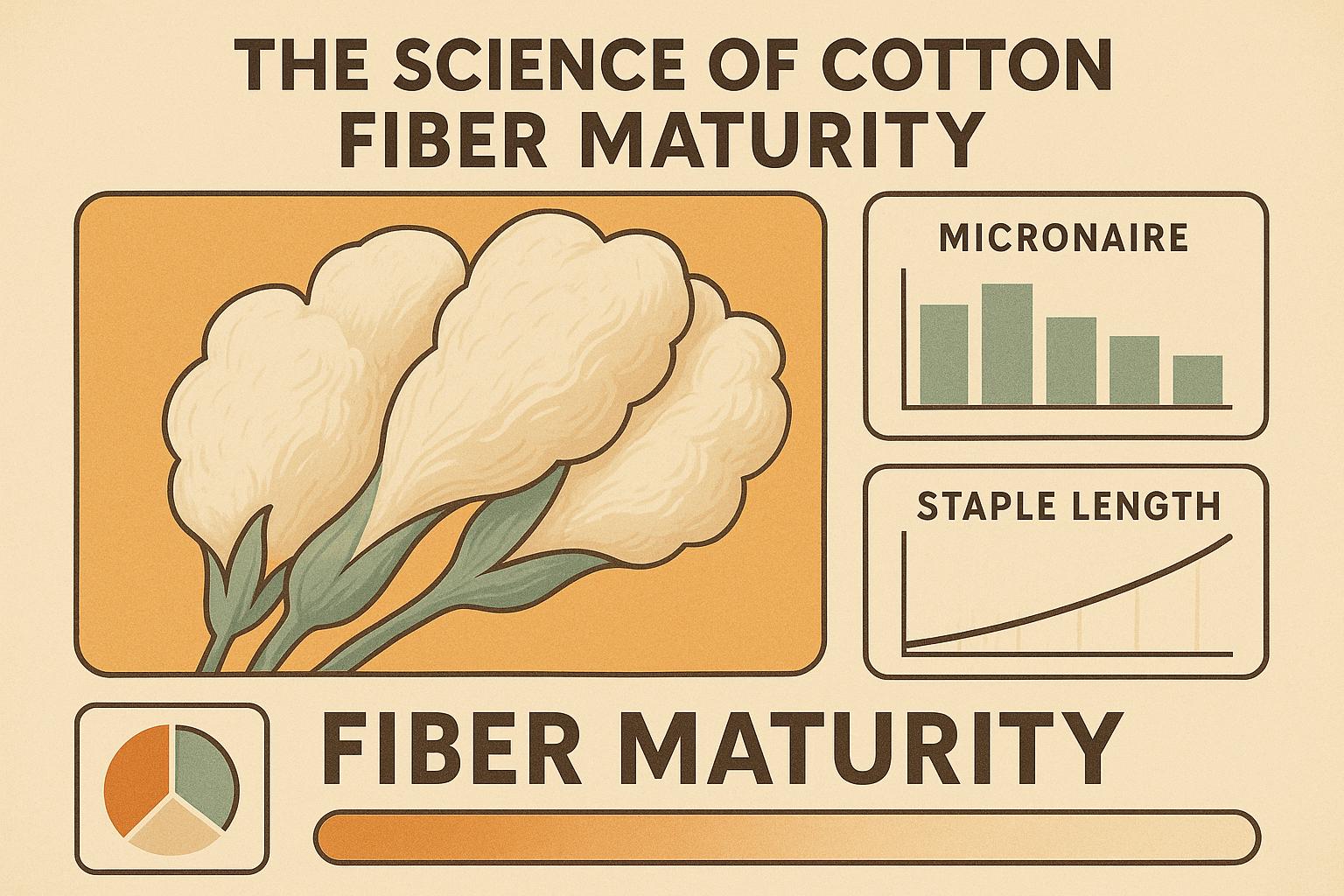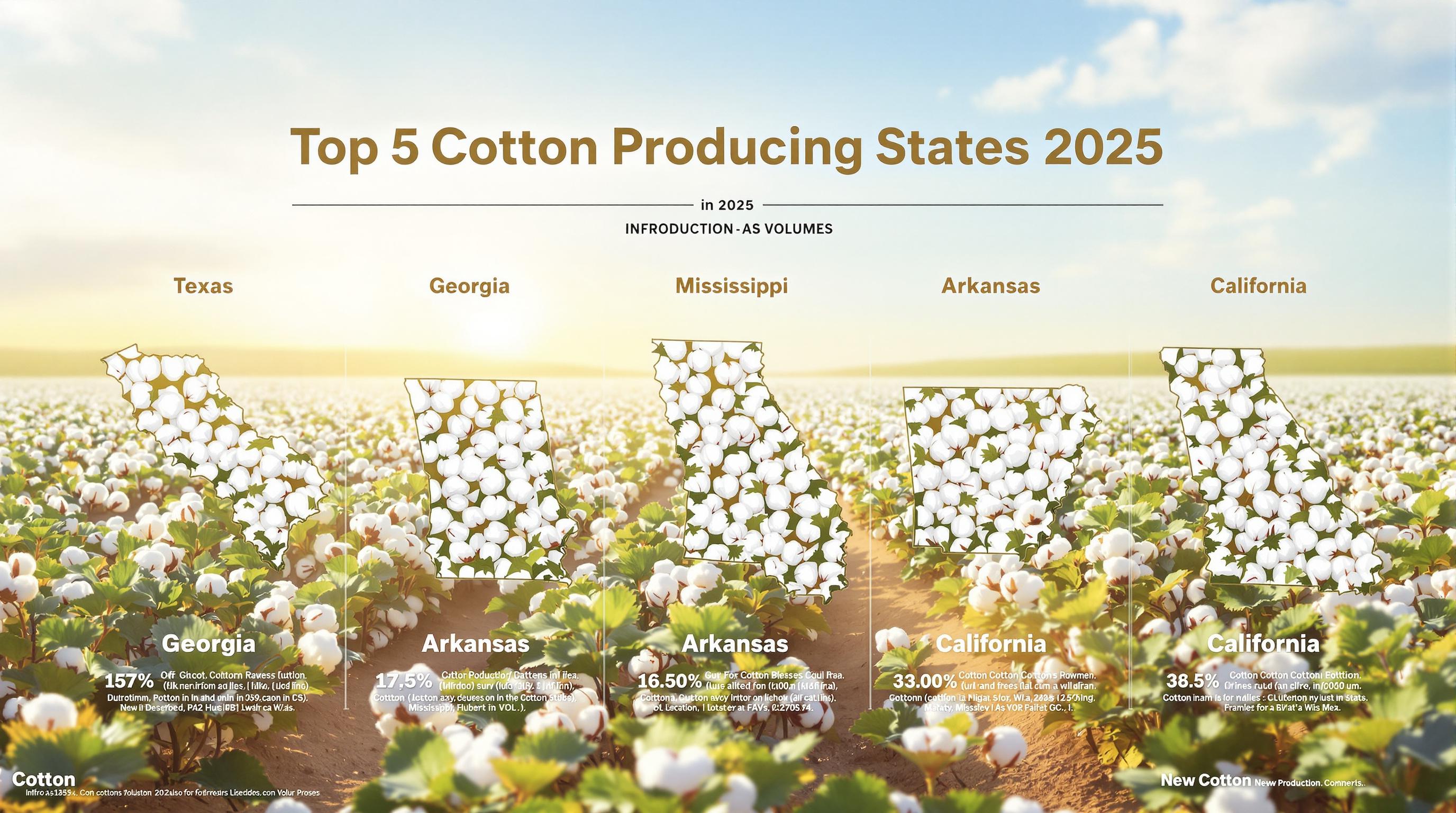When we think of cotton, luxurious fabrics like Egyptian or Pima might come to mind, with their long, silky fibers stealing the spotlight. But there’s another player in the cotton world that deserves its moment of recognition: short staple cotton. Often overlooked, this humble variety is the backbone of the textiles we use every day—from T-shirts to denim to budget-friendly bedding. At Cotton Gins, we’re passionate about all things cotton, and today, we’re shining a light on why short staple cotton is the unsung hero of everyday textiles.
What Is Short Staple Cotton?
To understand short staple cotton, we need to start with the basics. In the cotton industry, "staple" refers to the length of the cotton fiber. Cotton is categorized into three main types based on this length: short staple (less than 1 inch), medium staple (1 to 1-1/8 inches), and long staple (1-1/8 inches or more). Short staple cotton, as the name suggests, has the shortest fibers of the bunch, typically measuring between 3/8 and 1 inch.
While its fibers may be brief, short staple cotton makes up the vast majority of global cotton production. Varieties like Upland cotton, which dominates fields in the United States and beyond, fall into this category. At cottongins.org, we’ve processed countless bales of short staple cotton, and we’ve seen how its unique traits make it indispensable. So, what exactly makes it so special? Let’s dive in.
The Characteristics of Short Staple Cotton
Short staple cotton might not boast the length or fineness of its long staple cousins, but it has its own set of strengths that make it a textile workhorse. Here’s what defines it:
1. Versatility
Short staple cotton’s shorter fibers create a yarn that’s slightly coarser and less uniform than long staple varieties. This texture is perfect for rugged, practical fabrics like denim or casual apparel that don’t require a silky finish.
2. Affordability
Because short staple cotton grows more easily and yields higher quantities per acre, it’s less expensive to produce. This cost-effectiveness trickles down to the consumer, making it the go-to choice for affordable textiles.
3. Resilience
Don’t let the "short" label fool you—short staple cotton is tough. Its fibers can withstand the wear and tear of everyday use, which is why it’s a staple (pun intended) in items like towels, workwear, and basic bedding.
4. Ease of Processing
Short staple cotton can be a dream to work with. Its shorter fibers separate from the seed efficiently during ginning, streamlining the process and keeping production costs low.
These traits might not scream luxury, but they’re exactly what make short staple cotton the foundation of the textile industry. It’s the practical, no-nonsense fiber that gets the job done.
A Brief History of Short Staple Cotton
Short staple cotton has a storied past that’s deeply tied to the rise of modern textiles. Unlike long staple varieties, which were prized by aristocrats centuries ago, short staple cotton became the people’s fiber. Its history took off in the 18th and 19th centuries with the advent of the cotton gin—thank you, Eli Whitney—which made processing short staple Upland cotton fast and profitable.
In the United States, short staple cotton fueled the growth of the Cotton Belt, stretching across the South and into Texas. By the 1800s, it was the dominant crop driving the economy, thanks to its adaptability to a wide range of climates and soils. Today, Upland cotton accounts for about 90% of the world’s cotton supply, cementing short staple cotton’s legacy as a global powerhouse.
This history isn’t just a footnote—it’s a testament to how short staple cotton democratized textiles, making them accessible to everyone, not just the elite.
Why Short Staple Cotton Dominates Everyday Textiles
Walk into any store, and you’ll see short staple cotton everywhere. From the jeans in your closet to the dish towels in your kitchen, this fiber is the unsung hero behind the scenes. Here’s why it’s so prevalent:
Affordability Meets Demand
The average consumer isn’t shopping for 1,000-thread-count sheets—they want reliable, budget-friendly options. Short staple cotton delivers quality at a price point that fits most wallets, driving its use in mass-market clothing and home goods.
Perfect for Casual Comfort
There’s a reason your favorite T-shirt feels broken-in and cozy. Short staple cotton’s slightly fuzzy texture gives fabrics a soft, lived-in feel that’s ideal for casual wear. It may not be as smooth as Pima, but it’s got character.
High Production Volume
Short staple cotton plants are prolific producers. They thrive in diverse conditions, from the humid Mississippi Delta to the dry plains of India, ensuring a steady supply to meet global demand. This abundance keeps textile mills humming.
At cottongins.org, we see this firsthand. Our directory gins handle massive volumes of short staple cotton, turning raw bolls into the lint that powers everyday textiles.
The Challenges of Short Staple Cotton
Short staple cotton isn’t without its quirks. While it’s a champion of practicality, it has limitations that set it apart from longer-fiber varieties:
Lower Strength
The shorter fibers don’t twist together as tightly as long staple cotton, resulting in yarns that are less durable. This makes short staple cotton less suited for high-end fabrics that need to withstand years of use.
Rougher Texture
That fuzzy quality we love in T-shirts can be a drawback for luxury applications. Short staple cotton lacks the sleekness needed for fine weaves or silky finishes.
Pilling Potential
Because its fibers are shorter, short staple cotton is more prone to pilling—those tiny balls of fuzz that appear after wear. It’s a trade-off for its affordability and comfort.
These challenges don’t diminish its value—they simply define its niche. Short staple cotton shines where practicality trumps perfection.
Short Staple Cotton vs. Long Staple Cotton: A Comparison
To fully appreciate short staple cotton, let’s stack it up against long staple cotton:
- Fiber Length: Short staple (less than 1 inch) vs. long staple (1-1/8 inches or more).
- Strength: Short staple is less strong; long staple excels in durability.
- Texture: Short staple is coarser; long staple is smoother and softer.
- Uses: Short staple rules everyday items; long staple dominates luxury textiles.
- Cost: Short staple is cheaper; long staple commands a premium.
Think of it like this: short staple cotton is your trusty pickup truck—reliable and hardworking—while long staple cotton is the sleek sports car, built for performance and prestige. Both have their place, but short staple cotton keeps the world dressed and comfortable.
The Role of Short Staple Cotton in Sustainability
Sustainability is a growing concern in textiles, and short staple cotton has a role to play. Its high yields mean less land is needed to produce the same amount of fiber compared to long staple varieties. Plus, its adaptability to various climates reduces the need for excessive irrigation or chemical inputs in some regions.
That said, cotton farming—short staple included—can be resource-intensive. At Cotton Gins, we advocate for practices like crop rotation and water-efficient irrigation to keep short staple cotton production as eco-friendly as possible. It’s not perfect, but it’s a step toward balancing affordability with responsibility.
The Future of Short Staple Cotton
What’s next for this everyday hero? As textile technology evolves, short staple cotton could see new life. Innovations like enzyme treatments or blending with synthetic fibers might enhance its strength and texture, expanding its uses. Meanwhile, consumer demand for affordable, sustainable clothing ensures its place in the market.
At the same time, short staple cotton faces competition from synthetic alternatives like polyester. Yet its natural feel and biodegradability give it an edge that synthetics can’t fully replicate. We believe short staple cotton will remain a cornerstone of textiles for years to come.
Conclusion: Celebrating Short Staple Cotton’s Quiet Strength
Short staple cotton may not have the glamour of its long staple siblings, but it’s the unsung hero we all rely on. From the T-shirt you’re wearing to the towel you grab after a shower, this fiber is woven into the fabric of daily life. It’s affordable, versatile, and resilient—qualities that make it irreplaceable.
At CottonGins.org, we’re proud to support the growers and gins that bring short staple cotton to the world. So next time you pull on a pair of jeans or toss a load of laundry in the wash, give a nod to short staple cotton—the quiet champion behind it all.


